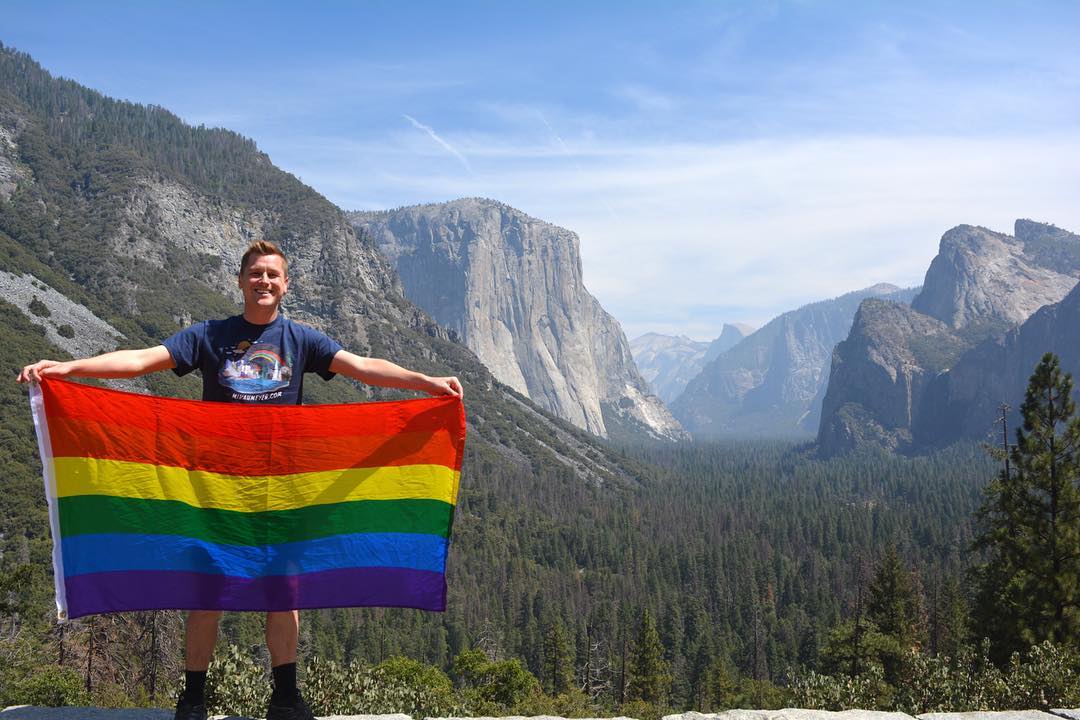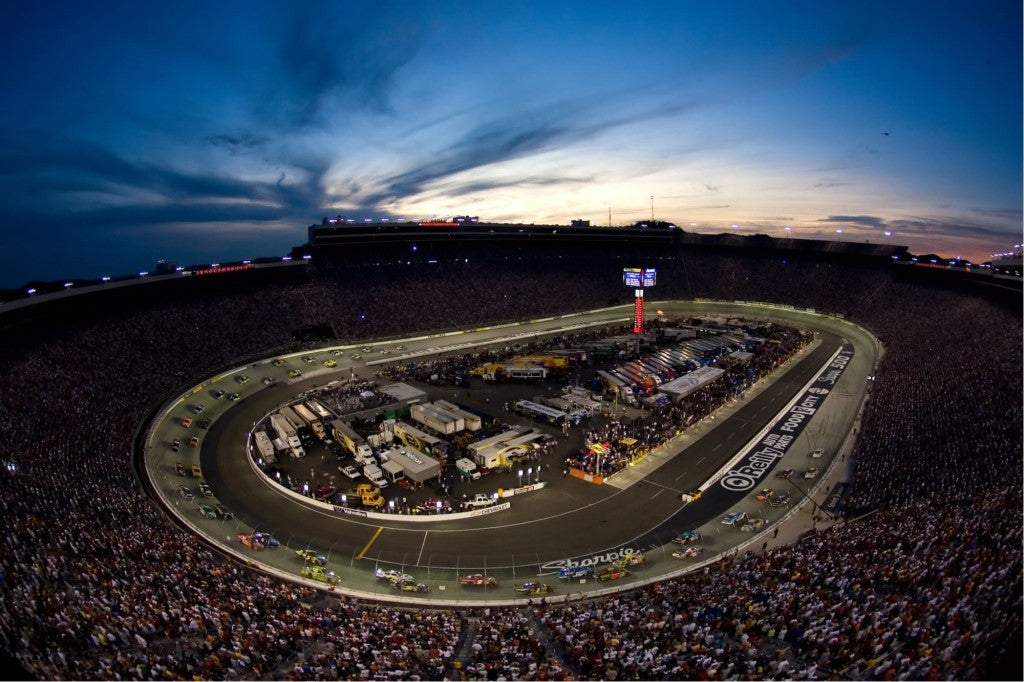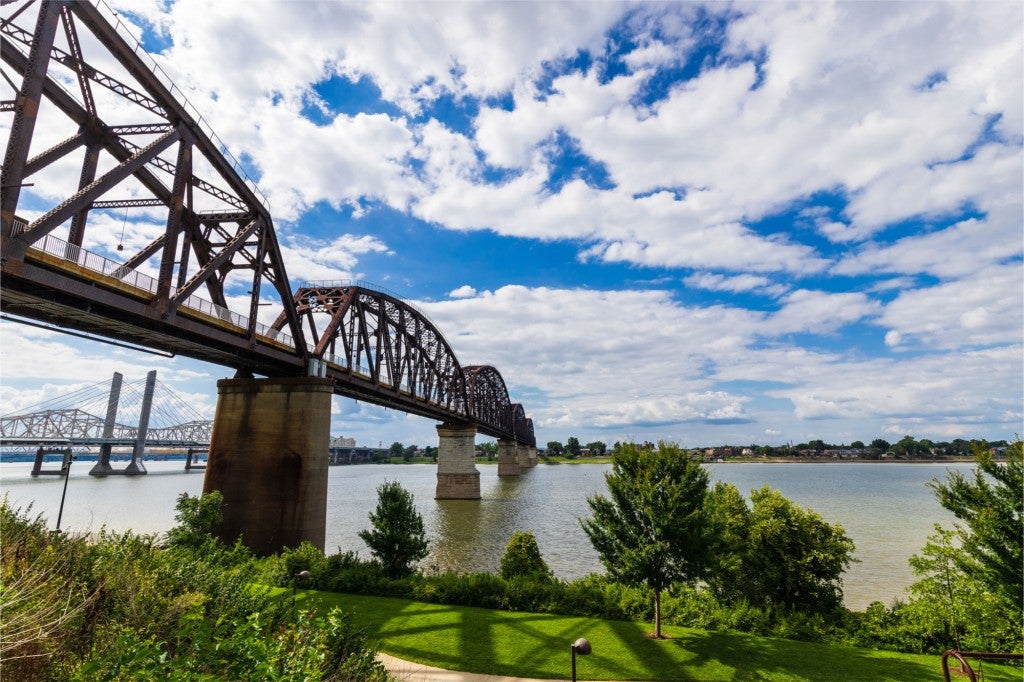Planning and pursuing a non-stop journey to see all 419 sites in the U.S. maintained by the National Park Service has plenty of roadblocks—mixing travel dates, road maps and general life-on-the-road is a handful for even the most experienced travelers.
But the issues at the front of Mikah Meyer’s mind when he launched his trip three years ago centered not only on travel, but on representation. As an openly gay outdoors enthusiast, Meyer noticed a complete lack of visibility for LGBTQ lifestyles in the outdoors industry, from media outlets to major international brands. Meyer’s trip and publicity was centered around changing that.
Three years later, he came to the end of his road in Washington D.C., having visited 419 national park sites with a rainbow flag in tow.
We talked to Meyer about his all-encompassing national parks trip and the challenges that come with a lack of LGBTQ representation in outdoor recreation spaces and brands.
Mikah Meyer’s Three-Year Journey of Exploration and Inclusion
View this post on Instagram
The Dyrt: Were you a frequent camper prior to tackling this goal of visiting all of the NPS sites across the country? What is one camping lesson you’ve learned along the way?
Mikah Meyer: I wasn’t actually. During my childhood, my dad worked on Sundays (he was a pastor), so we never did family weekend camping trips. I was in my 20s before I ever did anything beyond summer camp. I had only been to 10 national parks prior to launching this journey, but those experiences were enough to inspire me to visit them all.
I hope my lack of experience can show people they don’t have to be an “outdoorsy type” to enjoy nature. I’m from Nebraska, one of the flattest states in America, and have both my college degrees in singing. So if that background can lead to spending 3 years nonstop in all of America’s national parks, there’s no reason anyone should feel their history makes them not an outdoorsy type.
As far as camping lessons learned, there’s an old adage that fits well and goes something like, “If you want to go fast, go alone. If you want to go far, go together.” Most of my favorite memories from this trip came when friends joined me along the way, or I met interesting people at the site. So even more important than where you camp, is who’s sharing your tent.
What has been your favorite place to camp in your van so far? (or, one that you’re willing to share.)
View this post on Instagram
West Texas! It provided some of my most magical nights. The Fort Davis National Historic Site is an off-the-beaten-path NPS site that has both gorgeous scenery and ample camping. It’s close to the McDonald Observatory—location chosen because of the area’s premium dark skies–and also the town of Marfa, made famous not in the least by Beyonce’s photo in front of the art town’s “Prada store.”
The Big Bend National Park’s campsite in Rio Grande Village in one of the most remote campgrounds in a park that is already 3-4 hours drive from the nearest commercial airport. It’s within walkable distance of the Mexican border and the Rio Grande river, where you can swim, walk, or road-trip your way to our southern neighbor. Near the campground there’s an easy hike to natural hot springs and awe-inspiring vistas. My first night driving to the campsite, the wind was blowing so hard that at one point I took my foot off the pedal and the wind at my van’s back kept me going 40mph on its own.
Some people don’t realize that “NPS sites” include more than just national parks. Can you tell us about one destination (not a national park, but a smaller NPS site) that you were particularly surprised by on this journey?
Dinosaur National Monument. It’s hands down one of the best places I’ve been this whole journey, and everyone I’ve told about it has never heard of it since it’s not one of the 61 “big” national parks. Not only does it have some of the most spectacular geology I saw on my whole trip, but it has two rivers you can raft: the Green and the Yampa (the last undammed feeder of the Colorado River).
Otherwise, every single national lakeshore I visited was spectacular. Unfortunately, Indiana Dunes National Lakeshore got the upgrade to national park status over some I feel are more deserving, like Sleeping Bear Dunes, but in general I learned that outdoors enthusiasts should never overlook a National Lakeshore.
What are you most proud of about this project since starting your road trip three years ago?
Completing it! When I got back to the Washington, D.C. area, where I lived at the launch of this journey and planned to end it, I was surprised at how many of my friends said, ‘Yeah, we never thought you—or anyone—could actually pull this off, but didn’t have the heart to tell you.’ Only now is it really hitting me what’s happened over the past few years. I started out so Pollyanna thinking it’d be this project that would all fall into place as I imagined, then the work and realities of the project had me so focused just to get through each day and the next park, that only now am I really starting to reflect on this behemoth of a road trip.
When I started planning this project, I searched for openly gay outdoorsy role models and didn’t find anyone I could look up to. Knowing that this journey has provided that for other people has been one of my proudest moments. And accomplishing a feat that no person has ever done before makes me proud to show that not only can gay people be ordinary, but we can also be extraordinary. I’m also super proud that Google is now forever changed for any gay kid wondering if he can be outdoorsy.
Most of my favorite memories from this trip came when friends joined me along the way, or I met interesting people at the site. So even more important than where you camp, is who’s sharing your tent.
What has been a particularly challenging moment? And a rewarding one?
Halfway through my trip, an organization that had been working with me on a sponsorship-level dropped me out of the blue, telling me both on the phone and in writing it was because I was doing too much LGBT outreach. For months I would catch myself on the trail or driving through a park and thinking, “Is this outfit too gay? Will I scare away potential sponsors? Can I keep posting rainbow flag photos or will this get me blackballed?”
I thought my trip would be doomed if people found out I was gay, because I didn’t fit the popular image of what it meant to be outdoorsy…
A few months later, a fan of my project heard about this and made my journey’s largest contribution, which I was able to use as a matching donation to fundraise for my 3 months in Alaska–the hardest/most expensive state of this expedition. The donor said, “I’m supporting you BECAUSE you’re doing so much LGBT outreach. We need it.”
It was a heartwarming reminder that while I thought my trip would be doomed if people found out I was gay, because I didn’t fit the popular image of what it meant to be outdoorsy, being out and proud has expanded this journey in amazing ways I never imagined when I launched it.
You’ve played a big role in making the LGBTQ community more visible in the outdoor industry, through your appearance in the REI campaign, and your op-ed with Outside, along with your own site and social media channels. What do you see as the biggest barrier to this community feeling like they’re welcomed and embraced in the outdoors, and how can allies do their part to support your work towards that?
It’s very much a culture thing. When we imagine an outdoorsy person, it’s often a guy in flannel with a beard and a beer. Now, I’m not saying a gay guy can’t wear flannel and have a beard and enjoy beer—I know many who’d fit that exact image—but you don’t see those outdoorsy dudes advertised in LGBT media like you see guys on cruises, at beach resorts or in big dance parties. This lack of ad buys by outdoors brands is likely why I couldn’t find any openly gay outdoors figures in my pre-trip search, and explains the horrific comments on an Outside Magazine gear review that included a picture of two men cuddling with a dog in a sleeping bag (the only gay/outdoors imagery—of two actors—I found during my research). I’ve never seen anti-heterosexual comments on ads or reviews that include straight couples, and never heard someone say an athlete was “shoving their sexuality in the readers face” if they mentioned their opposite-sex spouse or their kids. I know they say not to read the comments, but if these are the users consuming this outdoor media, then it’s hard to assume the community feels otherwise.
Compared to the outdoors recreation industry, professional sports has done a great job in the past decade of starting to break the stereotype that gays aren’t sporty by having “Nights Out” where they highlight LGBT individuals from their community. And thanks to the coming out of athletes like Jason Collins (NBA), Robbie Rogers (MLS), Michael Sam (College Football), Gus Kenworthy (Action Sports) and Adam Rippon (Olympic Figure Skating), we are able to showcase the athletic talent of men stereotypically considered less masculine due to their sexual orientation.
So I’d like to see the outdoors recreation industry follow professional sports’ example. March in a Pride Parade. Host a LGBT Day in the Parks. Put an LGBT couple or an out-gay figure in an advertisement doing a completely normal outdoors situation; not only will it help normalize our presence in a culture typically seen as straight and white, but the pure normalcy of the ad will keep companies from appearing like they’re pandering.
How do you feel about the project wrapping up? What’s next?
It’s been a real adjustment back to “settled” life after 3 years of #VanLife.
The moment itself, reaching the top step of the Lincoln Memorial and looking back at the Washington Monument to officially wrap this project, was surreal. The press cameras moved right up and asked “How do you feel?” and after falling forward to my knees in disbelief, my mind went completely blank. It was the first time I’d been asked a question by the media and truly had no words. I just couldn’t believe I’d made it. That after growing up thinking I’d never make it out of my Nebraska home state, I’d now seen the entirety of the National Park System in every state/territory.
After those 3 years of waking up in my van knowing what my short term goal was for every day and how it fit into a larger mission, it’s definitely odd to be in one place. I’ve had a hard time sleeping regularly (surprisingly, it was easier in my van) and many of my friends who have done the Peace Corps said I sound like those returning from two year deployments in completely different cultures. I’m excited to keep this journey alive though by sharing it and the knowledge gained during it. I’ve already spoken at a number of schools, companies and colleges, and am working on a ranking guidebook of all the parks to help outdoors enthusiasts best utilize the days they’re planning for national park exploration (Spoiler Alert: the 61 National Parks are NOT the 61 best sites the NPS has to offer). Look for me at a parks talk near you!
Otherwise, I’ve got a number of future adventure projects I’m hoping to complete. So am looking forward to the next journey, whatever life brings. Share your ideas with me on my website and blog!
The Dyrt is the only camping app with all of the public and private campgrounds, RV parks, and free camping locations in the United States. Download now for iOS and Android.Popular Articles:
Articles on The Dyrt Magazine may contain links to affiliate websites. The Dyrt receives an affiliate commission for any purchases made by using such links at no additional cost to you the consumer.



